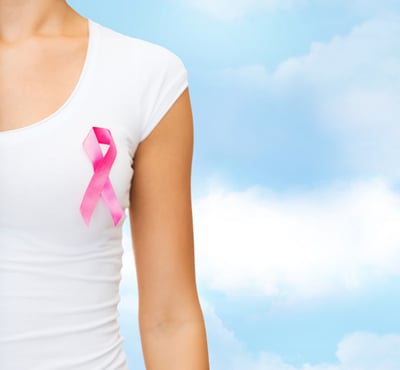Categories Prevention



Relevance: Medium
Most relevant for: Women under 50 years of age who have had or are considering removing their ovaries
Study: Removing ovaries before age 50 may increase the risk of chronic conditions for some women
Removal of ovaries and fallopian tubes prevents ovarian cancer, but it may come with other health risks. Experts recommend removal of ovaries and fallopian tubes in women at high risk for ovarian cancer due to inherited mutations in BRCA or other genes linked to ovarian cancer risk. For these high-risk women the benefit of ovarian cancer prevention outweighs the risk of long-term complications. Based on a recent study, some researchers feel that for women who are not at increased risk for cancer, the risk for some chronic conditions is too high to consider removal of both ovaries. (11/1/16)
READ MORE ›


Relevance: Medium
Most relevant for: Women with a BRCA1 mutation
Study: Early research on a drug to prevent breast cancer
Many researchers are interested in non-surgical options to reduce the higher-than-average risk of developing breast cancer in BRCA mutation carriers. This research study identified a type of drug, called a “RANK ligand inhibitor,” that may prevent breast cancer. Among mice that were genetically engineered to have no BRCA1 genes, those that were given the drug developed tumors less frequently than those that did not. While this is an exciting early study for BRCA mutation carriers, more work and human clinical trials need to be done before this can be used as a prevention therapy in humans. (7/12/16)
Update added 11/24/19: The RANK ligand inhibitor, denosumab is currently being studied as a possible breast and ovarian cancer preventive agent in human clinical trials.
READ MORE ›


Relevance: Medium
Most relevant for: Women at average risk for breast cancer
Study: Breast cancer risk model updated for average risk women with genetic, lifestyle and environmental information
A number of factors are known to increase breast cancer risk, but some of these factors have not been included in models to predict breast cancer risk. This study looks at an updated model that includes some of these factors, such as genetics, smoking, and drinking. The goal of the model is to give women a more individualized breast cancer risk assessment. (6/29/16)
READ MORE ›


Relevance: Medium-High
Most relevant for: Adolescent and young adult women
Study: Do women who eat a high fiber diet have a lower risk of breast cancer?
Some researchers believe that dietary fiber may decrease breast cancer risk by lowering estrogen levels in the blood. However, many previous studies have failed to find a link between fiber consumption and lower breast cancer risk. The current study suggests that consuming high dietary fiber during adolescence and young adulthood may lower breast cancer risk, but more work needs to be done to confirm this finding. In the meantime, everyone is encouraged to eat a variety of high fiber foods for the many well-documented health benefits. (03/08/16)
READ MORE ›


Relevance: Medium
Most relevant for: High risk women with a BRCA mutation or a close relative with a BRCA mutation
Study: Aerobic exercise lowers estrogen levels in premenopausal women at high risk for breast cancer
Many treatments that lower estrogen levels also reduce breast cancer risk. Unfortunately, these treatments are also associated with negative side effects. A recent study looked at the effect of regular aerobic exercise on the estrogen levels of women who are at high risk for breast cancer. (11/14/2015)
READ MORE ›


Relevance: Medium
Most relevant for: Women who are pregnant or have just given birth and are deciding about breastfeeding
Study: Breastfeeding may reduce hormone receptor negative breast cancer risk
Previous studies have shown that women who breastfeed have a reduced breast cancer risk. This study examines this association in the different breast cancer subtypes (ER, PR, HER2 negative/positive) and finds that breastfeeding is associated with a reduced risk of ER-/PR- breast cancer. (11/16/2015)
READ MORE ›